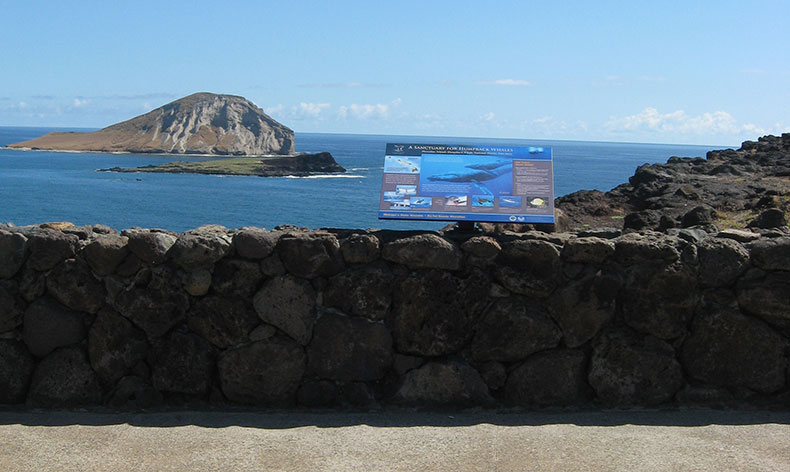
Concluding Remarks
It is important to reiterate that the responses to the questions found in this report are based primarily on the effects or potential effects of pressures on the sanctuary as they relate to humpback whales and their habitat, the primary resource targets of the Hawaiian Islands Humpback Whale National Marine Sanctuary. These responses may or may not be relevant to other threatened, endangered or culturally significant resources that exist within sanctuary waters. However, identifying additional marine resources for inclusion in the sanctuary was stipulated by Congress when the sanctuary was designated in 1992. In response to this congressional mandate, and with the support from the governor of Hawai'i and overwhelming public backing, the sanctuary is currently implementing a process to identify new marine resources appropriate for protection by the sanctuary. As part of the current management plan review process, the public will be provided with numerous opportunities to comment on this process.
This condition report is intended to comprehensively describe the status, pressures and trends of resources in the sanctuary. By doing so, this report helps to identify the pressures and their impacts on marine ecosystems that may warrant monitoring and remediation in the years to come. It is important to understand the factors that help structure the resources of the sanctuary, and how uses of its resources may affect their health, viability and longevity. The information presented in this report enables managers to look back and consider past changes in the status of the resources, and provides guidance for continued resource management as we face future challenges imposed by existing and emerging threats such as increasing interaction with shipping, marine debris, aquaculture, coastal development, alternative energy production, artificial reefs and climate change.
It is noteworthy that nine of the questions addressed in this condition report received a ranking of "good" or "good/fair," reflecting the relatively unimpaired condition of natural resources in the sanctuary. However, equally important to note is that five of the issues were rated as "declining." These five issues dealt with the impacts of human activities on habitat and living and maritime archeological resources and are of particular concern because their ratings suggest a need for greater attention.
A focus of the sanctuary in the future will be to continue to provide research-based public outreach and education to reduce unwanted human-impacts on sanctuary resources. Additionally, the sanctuary will continue to work towards strengthening the bond between the land, sea, and the people of Hawai'i. Recognizing both traditional Native Hawaiian values and place-based knowledge in natural resource management decisions will help ensure the continued success of the Hawaiian Island Humpback Whale National Marine Sanctuary.

